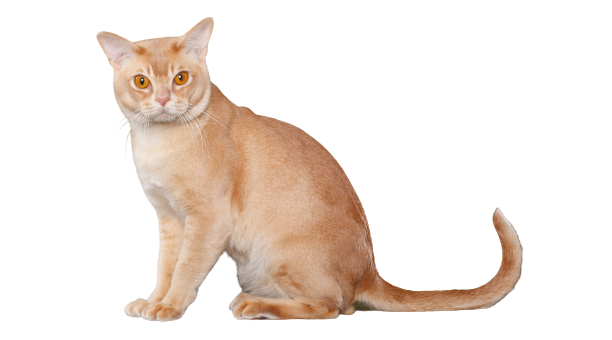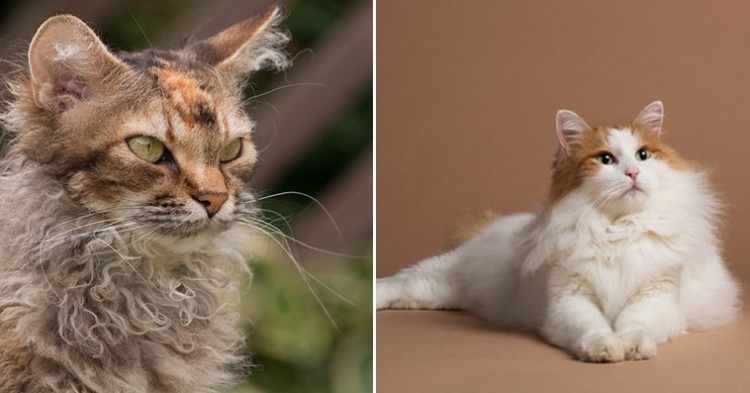
European Burmese
USD $600 - $1000 Price Avg.
Medium
Size
Yes
Lap Cat
10 to 15 years
Lifespan
Breed Information
| Popularity/Rank | 35 |
|---|---|
| Name | European Burmese |
| Other names | None |
| Origin | Burma |
| Origin | Thailand |
| Size | Medium |
| Coat | Soft, Short |
| Lap Cat | Yes |
| Lifespan | 10 to 15 years |
| Temperament |
Affectionate, Loyal, Sweet Affectionate The European Burmese is an affectionate cat that loves to be around its family. It is a loyal companion that will follow you around the house and always be there to greet you when you come home. This sweet natured cat enjoys being petted and will often purr loudly to show its appreciation. |
| Weight | Female: 7-10 pounds, Male: 10-14 pounds |
| Colors | ..., Blue, Chocolate, Cream, Lilac, Red, Brown |
| Kitten Prices |
USD $600 - $1000
A European Burmese kitten can cost anywhere from $600 to $1000 USD. The price of a European Burmese kitten depends on the breeder, as well as the reputation of the breeder. Some breeders may charge more for their kittens if they have a good reputation, while others may charge less. The price also depends on the quality of the kitten. A higher quality kitten will usually cost more than a lower quality kitten. When choosing a European Burmese kitten, it is important to consider the price and the quality of the kitten before making a purchase. |
Breed Characteristics
| Adaptability | |
|---|---|
| Affection Level | |
| Child Friendly | |
| Dog Friendly | |
| Energy Level | |
| Grooming | |
| Health Issues |
Conjunctivitis, gingivitis, respiratory infections, ear infections. Is European Burmese cat Hypoallergenic? There is no definitive answer to this question as it depends on the individual cat's coat and skin type. However, European Burmese cats are generally considered to be hypoallergenic as they produce less of the Fel d 1 protein, which is the main allergen found in cat saliva. 1. Conjunctivitis Conjunctivitis, also known as pink eye, is a common eye condition in cats. It is caused by inflammation of the conjunctiva, the tissue that lines the inside of the eyelid. Symptoms of conjunctivitis include redness, swelling, and discharge from the eye. Conjunctivitis is usually treated with antibiotics. 2. Gingivitis Gingivitis is a common oral health problem in cats. It is caused by inflammation of the gums. Symptoms of gingivitis include redness, swelling, and bleeding of the gums. Gingivitis is usually treated with dental cleaning and antibiotics. 3. Respiratory infections Respiratory infections are a common health problem in cats. They are caused by viruses, bacteria, or fungi. Symptoms of respiratory infections include coughing, sneezing, and difficulty breathing. Respiratory infections are usually treated with antibiotics. 4. Ear infections Ear infections are a common health problem in cats. They are caused by bacteria, yeast, or mites. Symptoms of ear infections include itching, redness, and discharge from the ear. Ear infections are usually treated with ear drops or oral antibiotics. |
| Intelligence | |
| Shedding | |
| Social Needs | |
| Stranger Friendly | |
| Vocalization | |
| Health Care |
The European Burmese is a relatively new breed, having only been developed in the early 20th century. As such, not much is known about their specific health needs. However, they are generally a healthy breed with few health problems.
Like all cats, the European Burmese needs routine vaccinations and regular vet check-ups. They are also susceptible to the same health problems as other cats, such as obesity, dental problems, and respiratory infections. Because they are a relatively new breed, there is still much to learn about the specific health needs of the European Burmese. However, they are generally a healthy breed of cat and with proper care, they can enjoy a long and happy life. |
History
The European Burmese is a cat breed that was developed in Europe from a cross between a Siamese and a Birman. The breed almost became extinct during World War II, but was revived in the 1950s by British and American breeders. The European Burmese is now recognized as a separate breed by most major cat registries.
The European Burmese is thought to have originated in France in the 1930s. A breeder named Madame Thaddée Bonnet crossed a Siamese with a Birman to create a new type of cat with Siamese-like markings and Birman-like colors. The resulting kittens were called "European Burmese" because they resembled the cats that were brought back to Europe from Burma (now Myanmar) by British soldiers.
During World War II, many of the European Burmese cats were killed or abandoned, and the breed came close to extinction. In the 1950s, British and American breeders began working to revive the breed. They imported cats from Burma (now Myanmar) and Thailand, and crossbred them with Siamese and Birmans to create cats that resembled the original European Burmese.
Today, the European Burmese is recognized as a separate breed by most major cat registries, including The International Cat Association (TICA), The Cat Fanciers' Association (CFA), and The Governing Council of the Cat Fancy (GCCF).
Description
The European Burmese is a cat breed that originated in Europe. The breed is also known as the Euro-Burmese, EB, or simply the Burmese. It is a medium-sized cat with a muscular body and short legs. The head is round with large, almond-shaped eyes. The ears are small and set high on the head. The coat is short and dense, with a satin-like texture. The colors of the European Burmese are brown, blue, chocolate, lilac, and seal point.
The lifespan of the European Burmese is 12 to 15 years. The size of an adult European Burmese ranges from 8 to 10 pounds (3.6 to 4.5 kg). The weight of an adult European Burmese ranges from 9 to 11 pounds (4 to 5 kg).
The personality of the European Burmese is active, playful, curious, and affectionate. They are intelligent cats who are quick to learn tricks and games. They bond closely with their human companions and enjoy being involved in all aspects of family life. They get along well with other pets in the household, including dogs and other cats.
The European Burmese is an adaptable cat who enjoys being part of the family and does well in most homes. They are not particularly vocal cats but will meow when they want attention or have something to say. They are active cats who enjoy playing games and exploring their environment.
The health of the European Burmese is generally good but there are some health concerns that have been associated with this breed including heart disease and kidney problems. It is important to work with a reputable breeder who can provide health clearances for parents of kittens you are considering adopting.
Overall, the European Burmese makes an excellent pet for families who want an affectionate and intelligent companion who will be involved in all aspects of daily life.
European Burmese Posts
Explore European Burmese's photos, videos, activities, stories, and facts.




